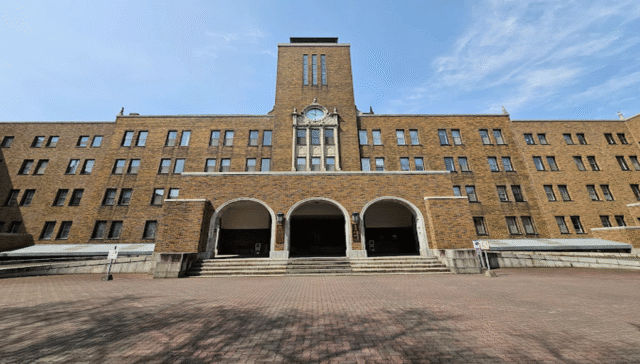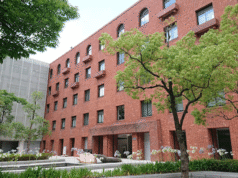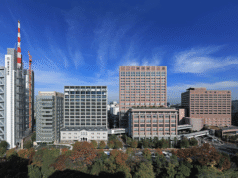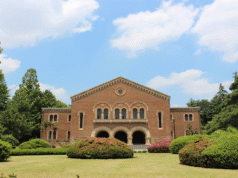Hokkaido University, Japan: From Agricultural Roots to a Global Research Leader in the North
Introduction
Nestled in the vibrant city of Sapporo, Hokkaido University traces its beginnings back to the pioneering Sapporo Agricultural College, founded in 1876. Officially becoming Hokkaido University under the 1918 charter, it expanded into one of Japan’s prestigious former Imperial Universities. Embracing the motto “Boys, Be Ambitious”, it stands today as a multidisciplinary hub renowned for groundbreaking research, societal impact, and a deep connection with Hokkaido’s unique environment. This article explores its heritage, academic architecture, campus life, research frontiers, student development, and global standing—drawing purely from the university’s official sources.
1. Establishment & Historical Roots
- Origins: Founded in 1876 as Sapporo Agricultural College, a trailblazer in Japan’s modern agricultural education. Its inspiring motto, “Boys, Be Ambitious”, was imparted by American Dean William S. Clark. (Wikipedia)
- Imperial Status: Chartered as Hokkaido University in 1918, becoming the fifth Imperial university in Japan. (Wikipedia)
- Scale & Structure: Now comprises 12 faculties and 21 graduate schools, operating on major campuses in Sapporo and Hakodate. (Wikipedia)
2. Campuses & Facilities
Sapporo Campus
- Located just north of Sapporo Station, it spans approximately 180 hectares, hosting academic buildings, labs, research facilities, student housing, and farmland. (Wikipedia)
- The Poplar Avenue, a scenic tree-lined path, has become a symbol of the university and Sapporo itself. (Wikipedia)
Hakodate Campus
- Dedicated to the Faculty of Fisheries Sciences, students study at Sapporo for foundational years before transferring to Hakodate for hands-on learning aboard research vessels like the Oshoro Maru and Ushio Maru. (Wikipedia)
3. Academic Structure & International Programs
- Undergraduate Faculties include Humanities, Education, Law, Economics, Medicine, Health Sciences, Nursing, Dental Medicine, Engineering, Veterinary Medicine, Fisheries, Agriculture, Pharmaceutical Sciences, and Science.
- Graduate Schools span topics from Agriculture and Environmental Science to Global Food Resources, Public Policy, and Infectious Diseases. (Wikipedia)
- English-Taught Programs: Available at graduate level in Agriculture, Engineering, Environmental Science, Life Sciences, Science, and Veterinary Medicine, opening Hokkaido University to global scholars. (Wikipedia)
4. Research Excellence & Institutional Vision
- Strategic Direction: Under HU VISION 2030, the university emphasizes both excellence in STEM and extending knowledge to real-world societal issues. (Hokkaido University Global)
- Research Centers: Over 20 top-tier institutes—including ICReDD, IVReD, Institutes for Low Temperature Science and Genetic Medicine, WHO collaborating centers, and more—drive interdisciplinary innovation. (Hokkaido University Global)
- Nobel Laureates:
- Akira Suzuki (Chemistry, 2010) – Professor Emeritus
- Benjamin List (Chemistry, 2021) – Special Appointed Professor
(Hokkaido University Global)
- Field Science & Indigenous Research: Extensive field stations support biodiversity research; the university leads in Ainu and Arctic studies, reflecting Hokkaido’s cultural and environmental context. (Hokkaido University Global)
5. Institutional Reputation & Global Impact
- SDG Recognition: Ranked 1st in Japan and 10th globally in the Times Higher Education Impact Rankings for contributions to the Sustainable Development Goals, marking five years at the top in Japan. (Wikipedia)
- Strategic Collaborations: Launched a Semiconductor Center in 2023 and formed research partnerships, including with Tohoku University, to advance semiconductor development and human resource training. (Wikipedia)
- Arctic University Membership: As part of the University of the Arctic, Hokkaido facilitates pan-Arctic academic collaboration. (Wikipedia)
6. Scholarships & Financial Support
Pre-arrival and Entry Scholarships
- MEXT Scholarships: Covers generous monthly stipends for undergraduates (
¥117,000), Masters (¥144,000), Doctoral (~¥145,000), with cold-region winter bonuses. Available via embassy, university, or special program routes. (Hokkaido University Global)
University-Specific Grants
- President’s Fellowship: Offered to select international students from partner institutions (currently suspended as of 2024). (oia.hokudai.ac.jp)
- Special Grant for Self-Supported Doctoral Students: Waives tuition and provides RA salary in fields like Environmental Science, Veterinary Medicine, etc. (oia.hokudai.ac.jp)
- Frontier Fund Clark Scholarship: Awards ¥50,000/month to privately-financed doctoral students with excellent records. (oia.hokudai.ac.jp)
External Scholarships
- JICA, JASSO, Matsushita Foundation, China Scholarship Council (CSC) grants provide further financial aid options. (oia.hokudai.ac.jp, futuregrad.oia.hokudai.ac.jp)
7. Campus Life & Student Support
- Green Urban Campus: The Sapporo campus doubles as a public park, cherished year-round for its natural beauty. Public walking tours are common. (Wikipedia)
- International Engagement: Satellite offices in Seoul, Helsinki, Beijing, Lusaka, Bandung, Manila, and Thailand promote global outreach and streamlined admissions. (Wikipedia)
- Student Support: While explicit details on career services are not found, robust international programs and support infrastructure suggest sophisticated student integration and academic success systems. (Hokkaido University Global)
8. Notable Alumni & Cultural Legacy
- Distinguished Alumni: Nobel laureates such as Akira Suzuki and Benjamin List, along with prominent figures in science and culture, reflect the university’s legacy of excellence. (Hokkaido University Global, Wikipedia)
- Cultural Heritage: William S. Clark’s legacy and the iconic Poplar Avenue intimately tie the university to both local and global narratives. (Wikipedia)
9. Address & Contact Details
- Location:
- Sapporo Main Campus: North of Sapporo Station, Sapporo City, Hokkaido (exact address accessible via official site) (Wikipedia)
- Fisheries Facility:
- Hakodate Campus: Home to Fisheries Sciences and research vessels Oshoru Maru and Ushio Maru. (Wikipedia)
- For contact and mapping details, users should explore Hokkaido University’s official website’s “Access & Maps” section. (Hokkaido University Global)
Summary
Hokkaido University stands tall as a historic yet forward-thinking institution—from its foundation as a pioneering agricultural college to its present status as a national research powerhouse enriched by Nobel laureates and impactful global partnerships. Located in the lush campus of Sapporo and extending to fisheries science in Hakodate, it fosters interdisciplinary education, societal impact, sustainability leadership, and international collaboration. For students seeking scholarly depth anchored in nature, innovation, and heritage, Hokkaido University offers a uniquely inspiring environment.
Hokkaido University Japan courses and fees, Hokkaido University international student scholarships, Hokkaido University admission process for foreigners, Hokkaido University research programs, study in Sapporo Japan at Hokkaido University, Hokkaido University campus facilities, Hokkaido University notable alumni, Hokkaido University academic excellence and rankings














